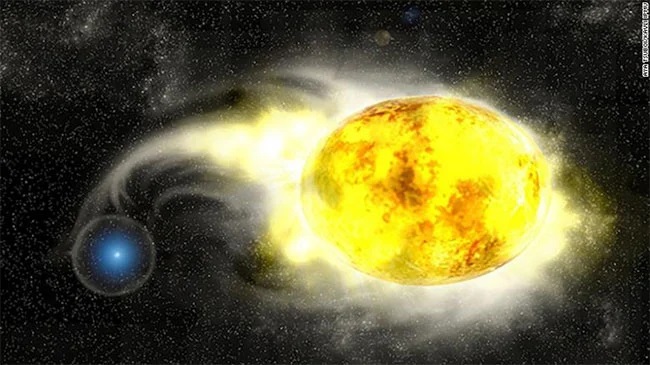The supernova explosion of a giant star 35 million light years away has revealed her fierce and strange death.
The stars often live a fierce life with death marked by a lightning explosion. Scientists have been trying for years to determine what really happens to these giant stars before they reach this explosive end.
Currently, an unusual supernova explosion gives researchers more evidence to answer the above question.
An international team of researchers used NASA’s Hubble Telescope to observe a giant yellow star 2.5 years ago when it exploded in a supernova explosion. This star is located 35 million light years from Earth and belongs to the Virgo cluster of galaxies.
Cold yellow stars are usually surrounded by end-of-life hydrogen, the blue “mantle” on the heated interior. However, when the star exploded, it did not have an outer layer of hydrogen, which was believed to give the star a dark blue color, indicating how high the temperature was. Instead, the star that scientists observed cooled down before it exploded.
“We’ve never seen this before. A star can’t be this cold without the outer layer of hydrogen,” said lead researcher Charles Kilpatrick, a researcher at the Center for Interdisciplinary Discovery and Northwestern University’s Astrophysics Study in Illinois. .
“We’ve looked at all the star models to explain this star, and each model requires this star to have hydrogen from a supernova, but we know it doesn’t have hydrogen. Has widened all the possibilities of physics ”.
The study was published May 5 in the Monthly Leaflet of the Royal Astronomical Society. Researchers believe that in the years leading up to the supernova’s explosion, the star somehow lost its hydrogen layer.
“What happens to giant stars just before they explode remains a great unsolved mystery. We rarely see what a star of this type goes through just before it explodes. In the supernova explosion.” , said researcher Kilpatrick.
Fortunately, Hubble observed a star for a few years before it exploded. However, what happened was not as expected by scientists.
When they studied the supernova further, the scientists found that the material from the explosive star had moved through its surroundings and plunged into a large mass of hydrogen. They believe it was the lost hydrogen that was removed from the star.


